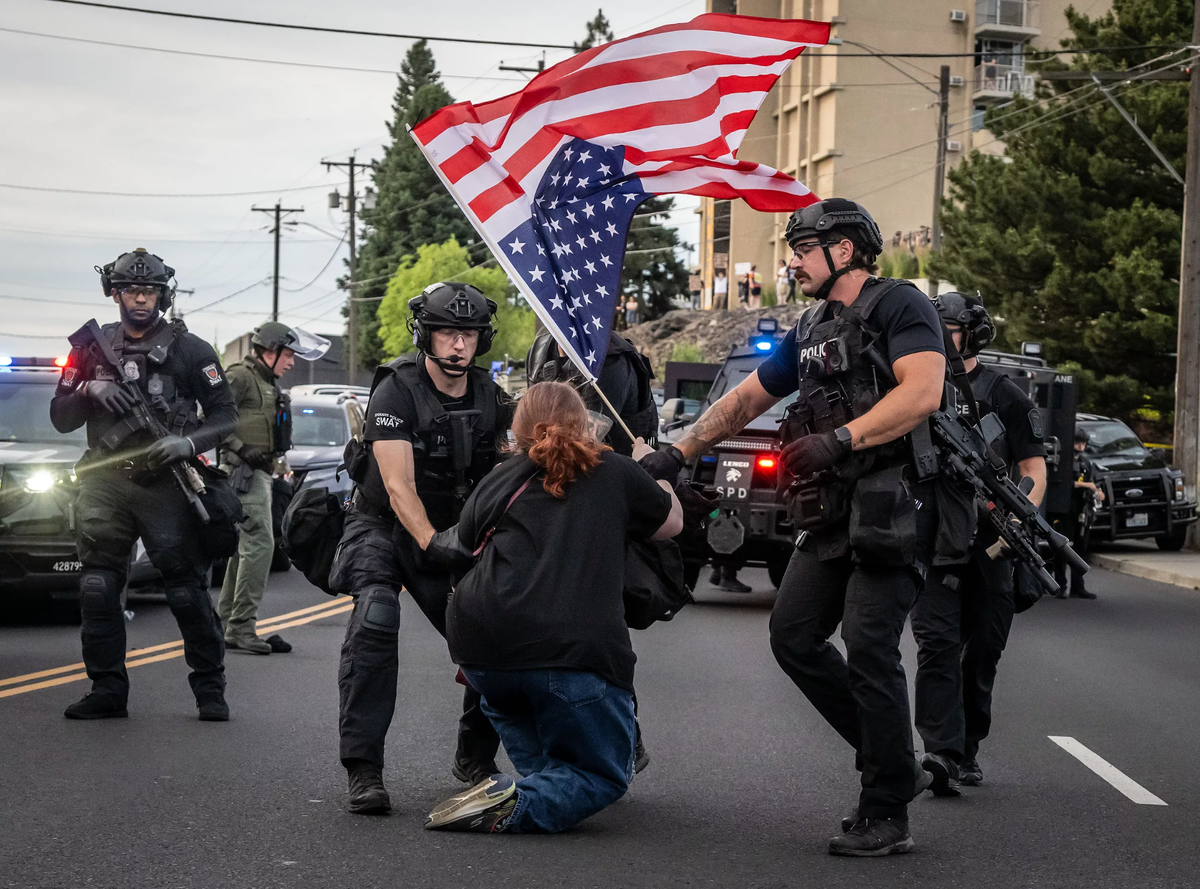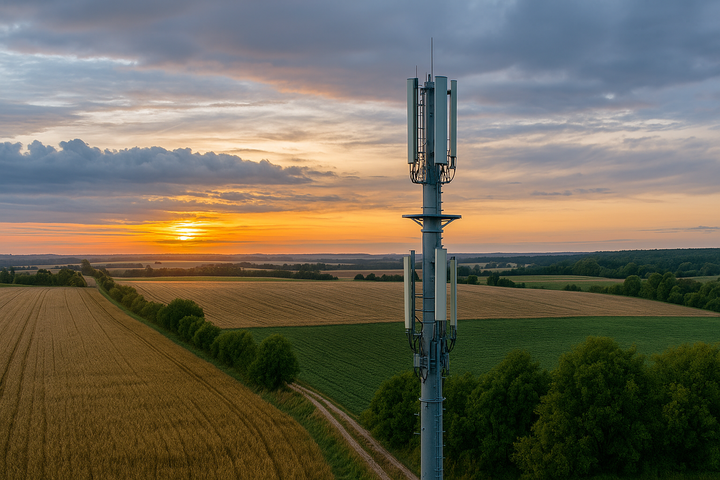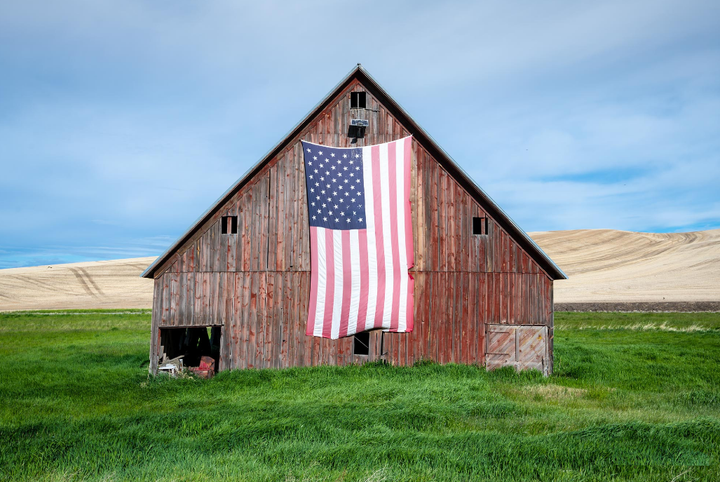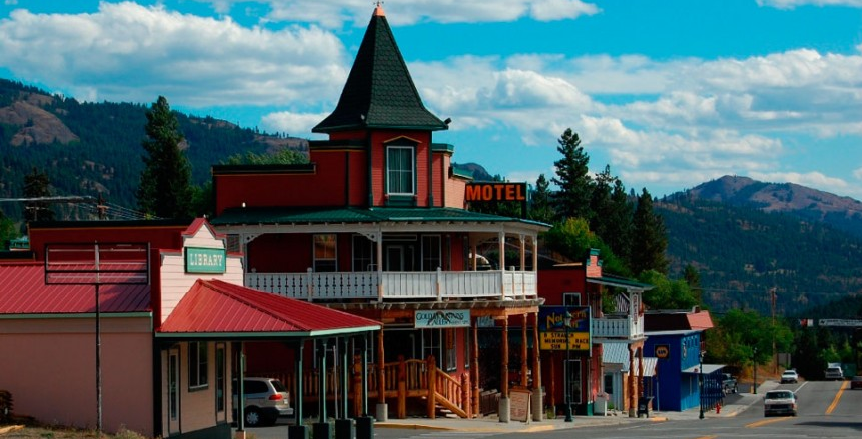Washington Cities Push Back Against ICE Enforcement

On a warm June evening in Spokane, former City Council President Ben Stuckart stood in front of a Homeland Security van and refused to move. The vehicle carried two young men: César Pérez, a Venezuelan asylum seeker, and another man believed to be a Colombian national, both facing sudden detainment after federal authorities revoked their work authorization. Stuckart, who had taken legal guardianship of Pérez, said simply:
“I don’t want this bus to leave with my friends… It’s not morally right, what’s happening.”
That moment, raw and personal, catalyzed a night of protest that would ripple across the state. Hundreds gathered outside the downtown Spokane ICE facility. The demonstration was mostly peaceful but decidedly defiant. By midnight, Mayor Lisa Brown issued the city’s first emergency curfew since 2020.
“We respect their right to peacefully protest and to be upset about federal policies,” Mayor Brown told reporters. “I have been that person who has protested federal policies, and that is a right we have.”
The protest began peacefully and remained largely nonviolent, but tensions rose sharply as demonstrators physically blocked an ICE transport vehicle, deflating tires and refusing orders to clear the roadway. Spokane police, not federal agents, took charge of the scene, deploying smoke grenades and pepper-ball rounds after dispersal warnings were ignored. While confrontational, the crowd response stopped short of riots or property damage.
What followed was notably different from the crackdowns often seen under federal authority. There were no tear gas barrages, no unmarked vans snatching protesters, no mass arrests or club-swinging phalanxes. ICE agents were present but remained behind the scenes, silent and unaccountable. Their absence from public engagement served as a chilling reminder of what typically happens when federal enforcement takes the lead: escalation, secrecy, and brutality.
In contrast, Spokane’s decision to keep the response local and measured, even while using crowd-control tools, reflected a civic choice: to uphold order without dehumanizing those who resist. It was far from perfect, but it was not the kind of spectacle that has defined ICE actions elsewhere.
Spokane’s decision to keep the response local, measured, and accountable sent a powerful signal.
From Spokane to Seattle: A State Responds
What began in Spokane was echoed the same evening in Seattle, where activists surrounded the Henry M. Jackson Federal Building chanting in Spanish and English. Some used bicycles to block entrances. In Olympia, a solidarity event drew over 500 people. Everett and Tacoma also saw demonstrations, reflecting a growing pattern of civic resistance across Washington.
“People are being hunted down,” said Brenda Rodríguez López, director of the Washington Immigrant Solidarity Network (WAISN), speaking at an Olympia rally. “There have been sightings in my hometown in Pasco, and that makes me enraged.”
The protests come amid renewed ICE operations targeting immigrants with lapsed work authorization, many of them refugees or asylum seekers like Pérez, whose paperwork delays were caused by federal inaction. Some of the targeted individuals have lived and worked in Washington for years under legal status.
When Political Shouting Turns Into Federal Action
Notably, Rep. Michael Baumgartner (R‑WA‑5) has publicly blamed Washington’s sanctuary laws for making enforcement more dangerous, while advocating for state cooperation with ICE. At a March town hall in Ritzville, he said:
“What’s happening right now is because Washington state is a sanctuary state… [ICE] can’t go into those jails…and…has to go and get them in their homes or on the street, where they have to be all loaded up with weapons, and it’s much more dangerous.”
Adding: “It would be better for Washington state if they help the government enforce federal immigration laws… national security is a clear role of the President.”
His remarks dovetail with Project 2025’s hardline immigration agenda, effectively offering ICE a green light. Baumgartner’s language doesn’t merely critique policy, it welcomes federal intervention into Washington communities.
When Federal Policy Collides with Local Values
Washington State has taken a clear stance on immigration. Sanctuary laws prohibit local cooperation with federal deportation efforts unless required by court order. Cities like Spokane and Seattle have reinforced those policies with local ordinances protecting due process and civil rights.
Yet federal enforcement continues to test the limits of those laws. Stuckart’s protest was sparked not by a raid, but by ICE agents showing up at a court-mandated check-in, once considered safe ground. Federal policy has turned routine compliance into a trap.
“This is personal,” said Matt Payne, a protester in Seattle. “We know people being detained, and we know they’re being taken through these doors tonight.”
Rather than retreat, communities have responded with action rooted in democratic values: transparency, justice, local control, and dignity.
A Civic Line Drawn
The events in Spokane and beyond are not just moments of protest; they are statements of principle. They reflect a state where mayors, former councilmembers, and everyday citizens are willing to challenge federal power to protect neighbors.
Washington’s Democratic leaders are showing that resistance can be grounded in legality, restraint, and moral clarity. They are not flouting the law. They are upholding a deeper one.


